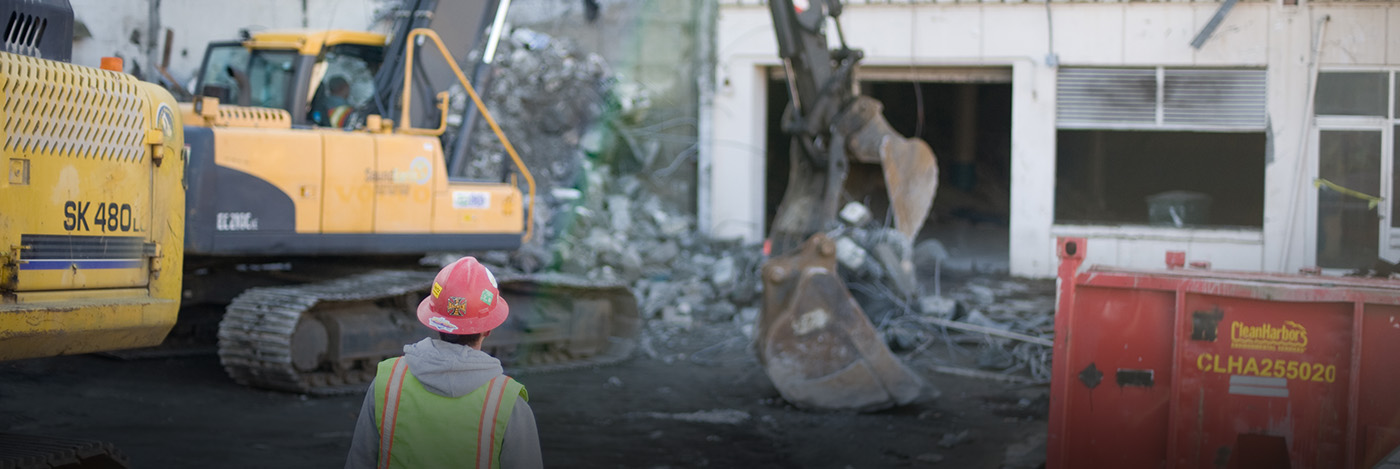
Municipal Construction Resources
Runoff from construction sites can carry fine sediments and other pollutants that can harm aquatic life. Practicing good sediment and erosion control at all construction sites can help keep our water clean and healthy. Construction sites over one acre in size, or smaller if part of a larger phased project, are required to get coverage under the Construction Stormwater General Permit (CSWGP). Following the requirements in this permit helps control and reduce water pollution.
Noteworthy News
Recent Updates
WSC Develops E&O Documents in Collaboration with Jurisdictions Statewide
Stormwater Assistance Rack Cards
These rack cards are designed to be displayed on an informational rack near a permit counter, be included in a permit packet, or for distribution by municipal source control inspectors when they encounter issues on a site. Our goal is to offer easily accessible assistance for industrial facilities or construction contractors seeking guidance on common stormwater permitting struggles. The scannable QR codes link directly to webpages that are consistently updated with the latest information, guidance, and resources for these often complex permitting requirements.
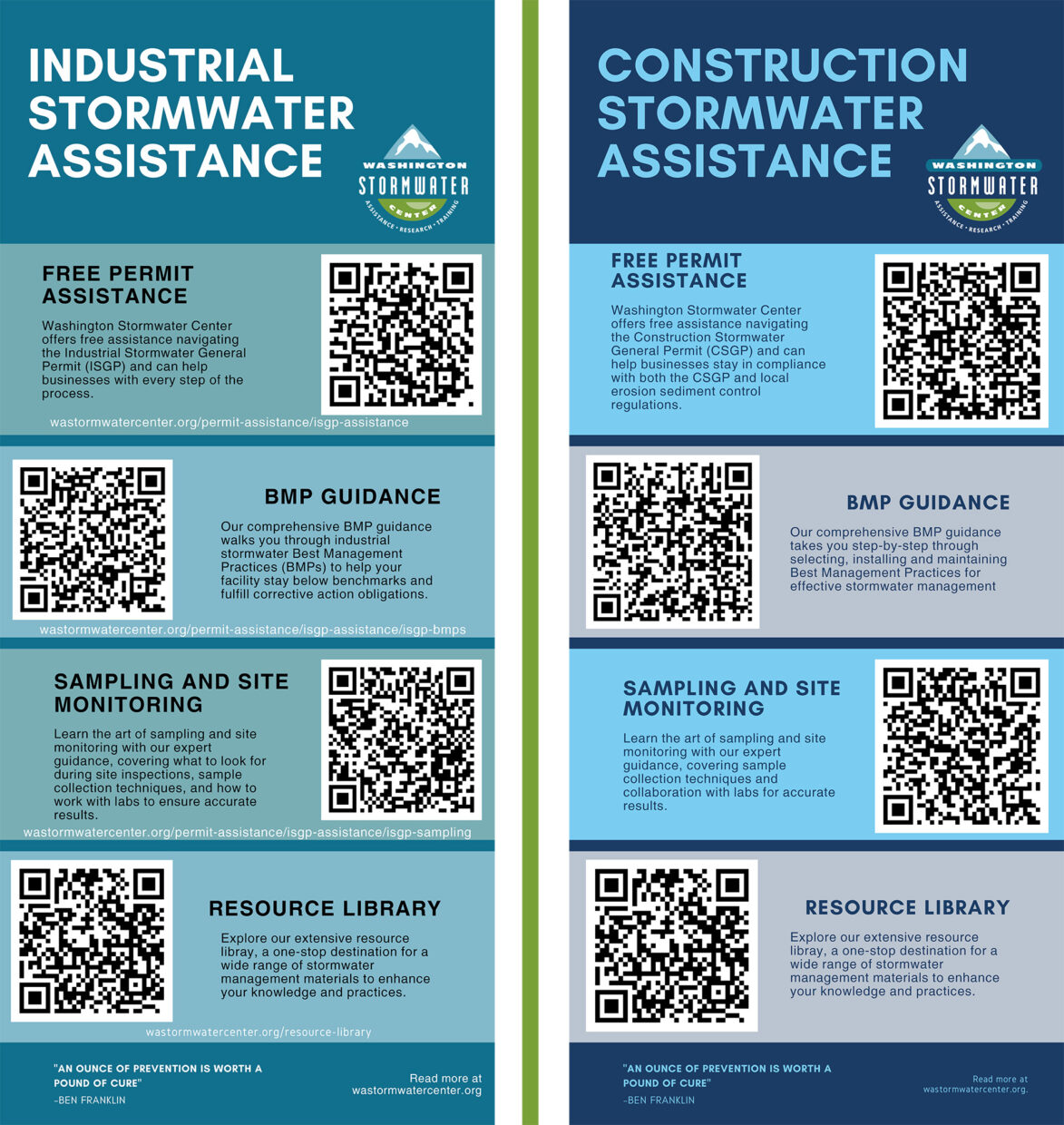
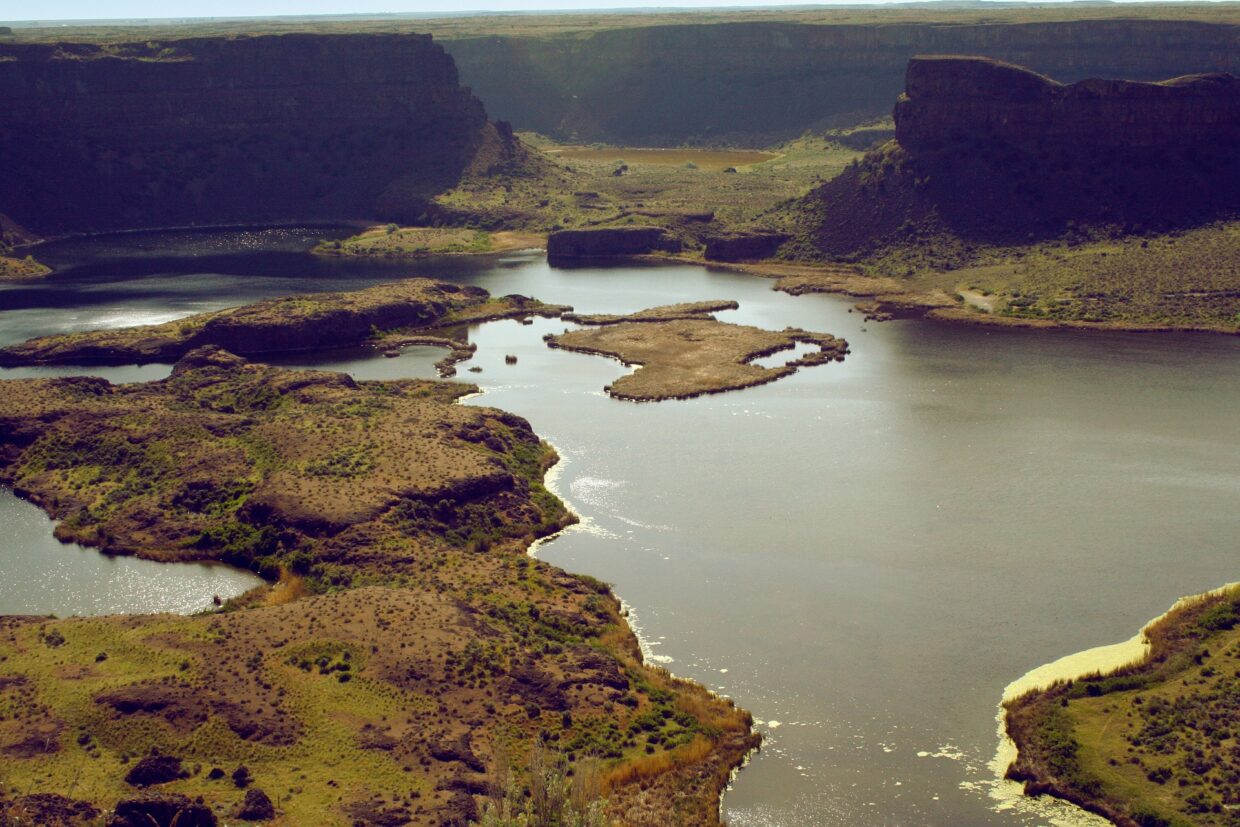
EWA Construction Documents
We would like to introduce three new E&O documents created to address construction site issues. Eastern WA permittees working as part of the EWA Stormwater Education & Outreach Working Group identified a need for documents with information on construction BMPs for developers, engineers, planners, review staff, contractors, and construction crews.
Do you work in the construction industry?
The Washington Stormwater Center is inviting contractors to attend a series of FREE webinars that will give you the tools to prevent pollution on your construction sites. Hosted by stormwater professionals working across Western Washington, these webinars will provide helpful tips and examples to contractors.
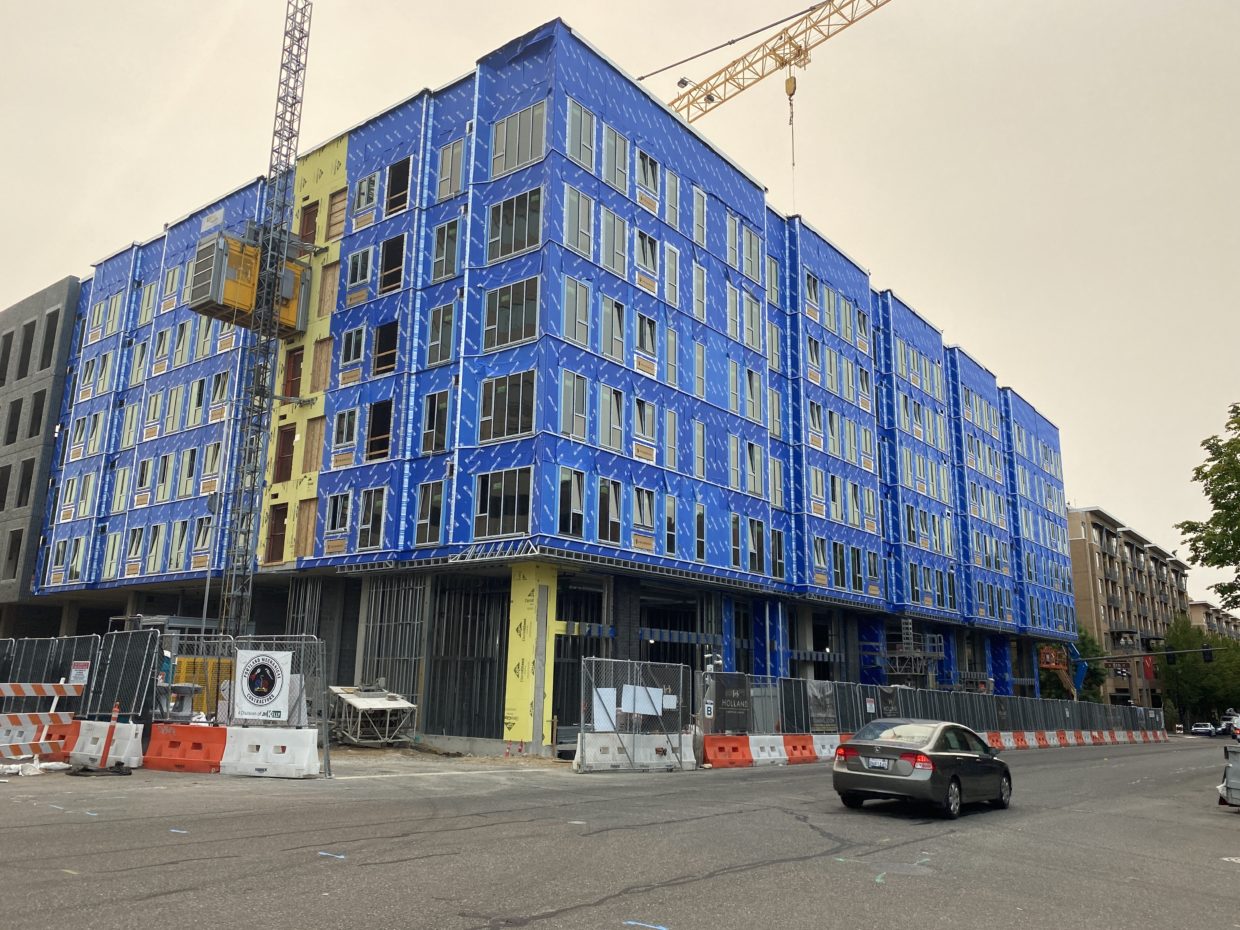
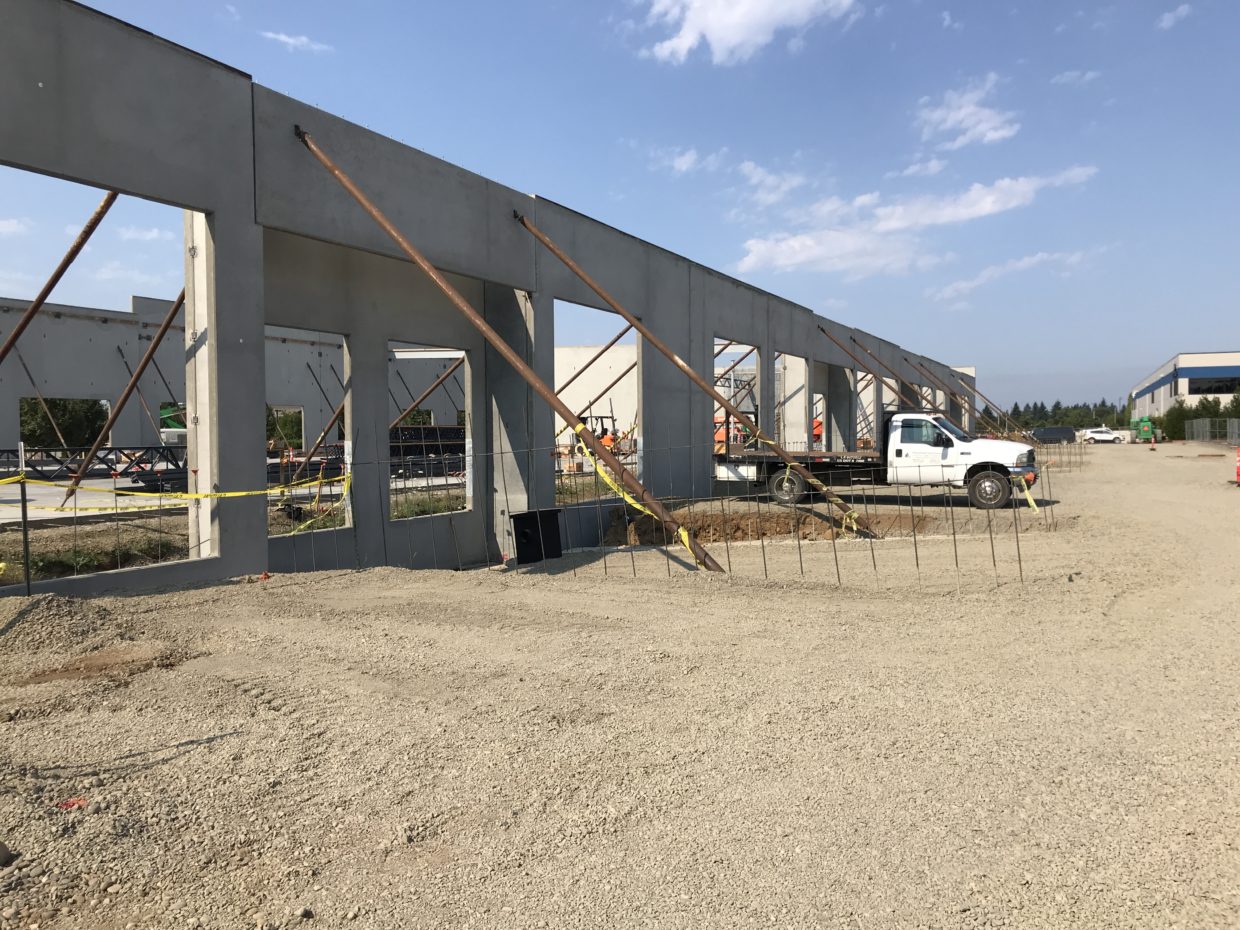
Construction Training Video Series
Small, less than 1 acre, sites can cause huge impacts to our waterways. Stormwater runoff from construction sites can carry muddy water, debris, and chemicals such as vehicle fluids into local waterways. Working with experts from cities, counties, and WSDOT, we developed a series of eight videos to help small projects and the municipal staff who inspect them for compliance with city ordinances.
The toolkit includes five checklists and two factsheets:
- Initial Erosion and Sediment Control (ESC) Inspection (Word / PDF)
- Construction ESC Inspection (Word / PDF)
- Post-Construction ESC Inspection (Word / PDF)
- Construction of Permanent Stormwater Best Management Practices (BMPs)/Facilities Inspection (Word / PDF)
- Post-Construction of Permanent Stormwater BMPs/Facilities Inspection (Word / PDF)
- Implementation guidelines for Western Washington (PDF factsheet)
- Implementation guidelines for Eastern Washington (PDF factsheet)
The toolkit also includes a set of templates and a guide for using the inspection checklists in Survey123:
- Guide to Using the Municipal Construction Stormwater Site Inspection Toolkit Electronic Checklists (PDF)
- Survey123 template for the Initial ESC Inspection checklist (XLSX)
- Survey123 template for the Construction ESC Inspection checklist (XLSX)
- Survey123 template for the Post-Construction ESC Inspection checklist (XLSX)
- Survey123 template for the Construction of Permanent Stormwater BMPs/Facilities Inspection checklist (XLSX)
- Survey123 template for the Post-Construction of Permanent Stormwater BMPs/Facilities Inspection checklist (XLSX)
Purpose of the Permit: The requirements of this stormwater management permit regulates the discharge of pollutants from construction projects to protect water quality in Washington State. The permit authorizes the discharge of stormwater and authorized non-stormwater associated with construction activity. The permit is a combined NPDES and State Waste Discharge Permit that limits the discharge of pollutants to surface waters.
Applying for Coverage under the Permit: Construction sites covered under the existing permit that reapplied for permit coverage will be covered under the new permit. New or unpermitted construction sites may obtain coverage under the permit by submitting a complete permit application to Ecology and satisfying all applicable public notice and State Environmental Policy Act requirements. Apply Online for Permit Coverage.
Your Right to Appeal: You have a right to appeal the final general permit and the general permit coverage for a specific facility to the Pollution Control Hearings Board (PCHB). Any appeal must be filed within 30 days of the issuance date of January 1, 2021.
Appeals of the general permit issuance or must be filed within 30 days of issuance of the general permit. See the Appeal of the General Permit Focus Sheet for more information.
Appeals of the general permit coverage for a specific facility must be filed within 30 days of the effective date of coverage. See the Appeal of a General Permit Coverage Focus Sheet for more information.


